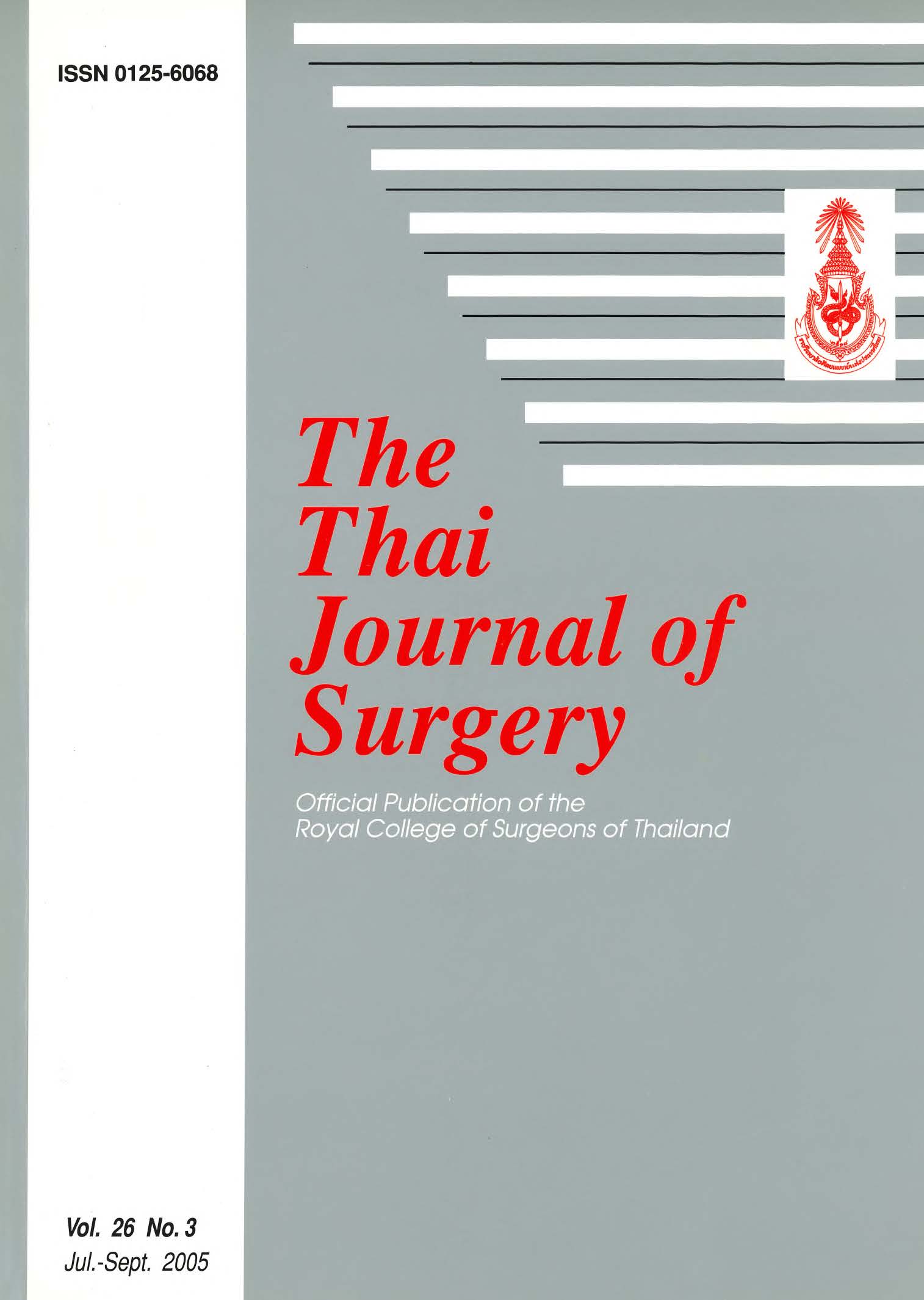The Anatomical Variations of Cystic Duct in Northeastern Thai Population
Abstract
Background: The anatomical characteristics of the cystic duct vary. Each is of great importance, particularly for gallbladder surgery, be it open cholecystectomy or laparoscopic cholecystectomy. Operation with bile duct injury, such as common hepatic duct or common bile duct injuries, may result in serious complications.
Objectives: To study the anatomical characteristics of the cystic duct and their variations from donated cadavers. The results should stand for the Northeastern population.
Materials and Methods: A descriptive study was conducted whereby medical data on dissection of the liver hilar were reviewed. Records of the findings were registered on the relevant form. Data of donors, from 2000-2002, were supplied by the Anatomical Department, Faculty of Medicine, Khon Kaen University.
Results: The studied group included 96 patients, of which 59.4% were male and 40.6% were female, aged between 20-91 years (average 66.27). The main causes of death included heart failure (29.17%) and cancer (8.33%). All patients were from Northeastern region, mostly from Nakorn Ratchasima province (21) and Khon Kaen province (20). The cystic duct usually joined the common hepatic duct (CHD) at the right of RHD (92.7%) and the pathway encountered included angular type (79.2%), parallel type (8.3%), anterior spiral type (6.3%) and short or absent type (5.2%). The length of the cystic duct is 0-6 cm (average 1.42 cm). In addition, there are also anomalous characteristic, namely accessory duct (1.04%) and replaced duct (1.04%)
Conclusions: In the Northeastern population, the cystic duct joins the CHD mostly with a right angular junction and is on average 1.42 cm long. There are unusual anatomical variations which account for 7.28% and are divided into short or absent type (5.2%), accessory duct (1.04%) and replaced duct (1.04%)
References
2. Moosman DA, Coller FA. Prevention of traumatic injury to the bile duct: a study of the structures of the cystohepatic angle encountered in cholecystectomy and supraduodenal choledochostomy, Am J Surg 1951;82: 132-43.
3. Benson EA, Page RE, A practical reappraisal of the anatomy of the extrahepatic bile ducts and arteries. Br J Surg 1976;63:853-60.
4. Watson JF, Anomalous cystic and common bile ducts associated with cholecystitis. Am J Surg 1969; 118: 459-62.
Downloads
Published
How to Cite
Issue
Section
License
Articles must be contributed solely to The Thai Journal of Surgery and when published become the property of the Royal College of Surgeons of Thailand. The Royal College of Surgeons of Thailand reserves copyright on all published materials and such materials may not be reproduced in any form without the written permission.



